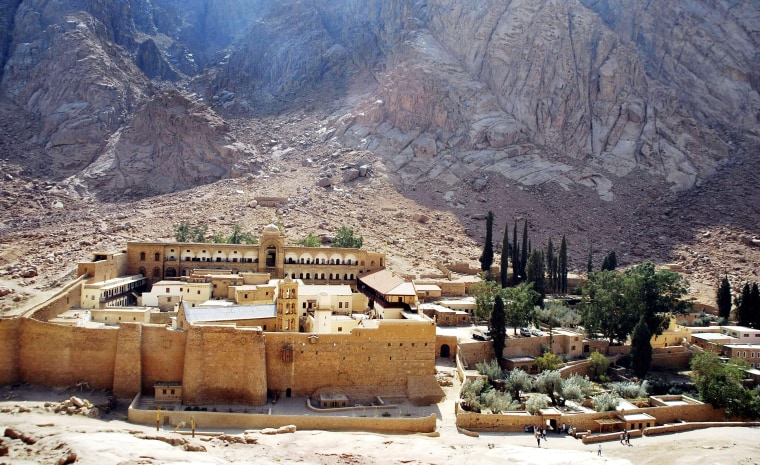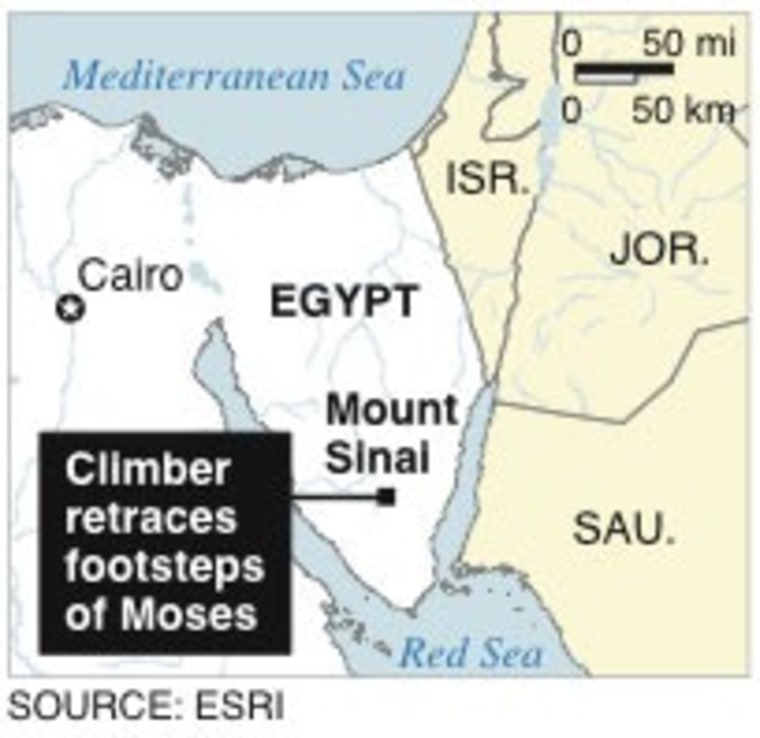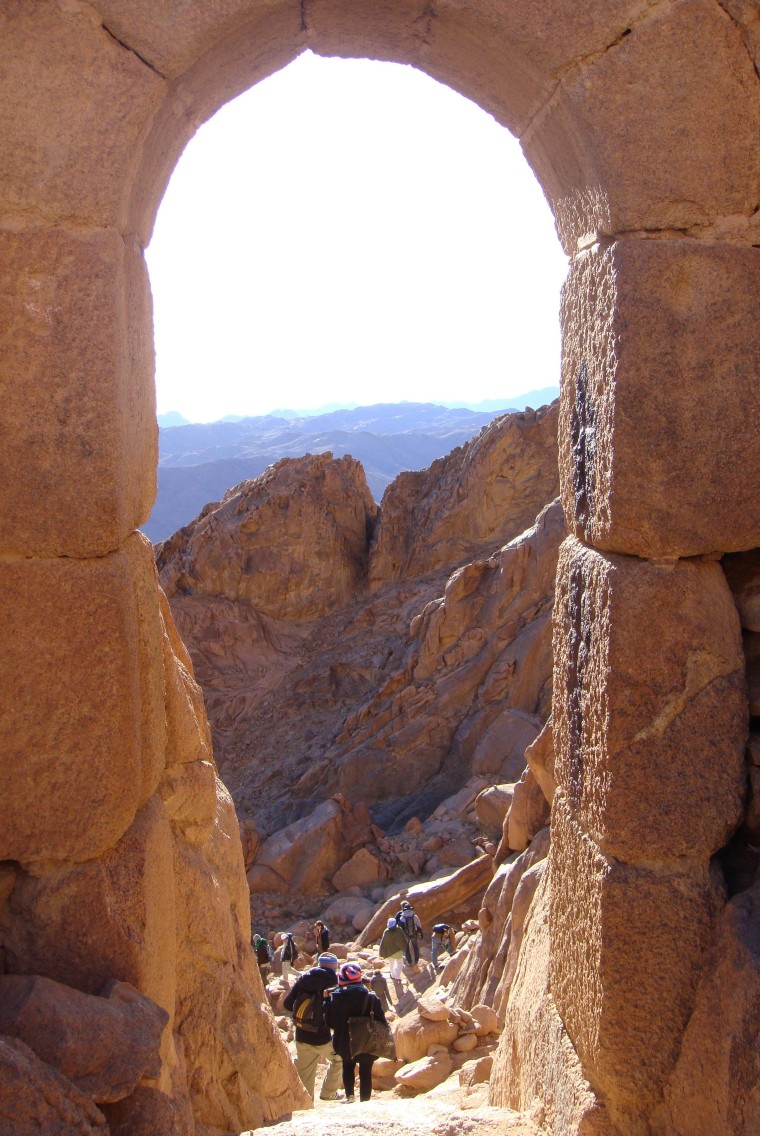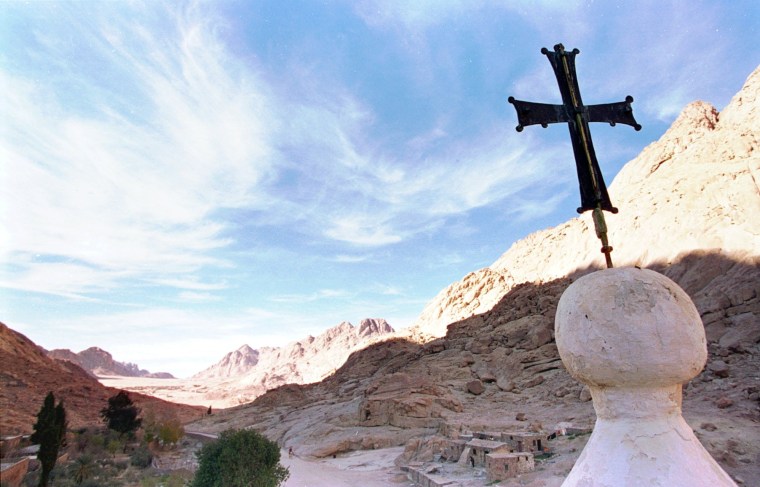In the Bible, Moses climbs Mount Sinai to receive the Ten Commandments.
But he was the chosen one, and I am a mere mortal. Divine intervention seemed unlikely as I stood at the base of the mountain, chilled to the bone at 2 a.m., with only the faint light from a spattering of stars and sliver of moon on the dark rocky terrain.
I'd decided to head to the fabled mountain peak while frolicking in the sun in the azure waters of the Red Sea, where the temperatures were warm and balmy. I would retrace Moses' footsteps on a hike to witness the sunrise from the summit. If Moses could do it, why couldn't I?
But once I arrived for this overnight trek, sleepless and in temperatures that felt like North American winter, I wasn't so sure.
Then out popped our guide, a sprightly young Egyptian man with a yellow-toothed grin. He was dressed in little more than a gallibaya, the traditional long men's shirt, while I felt cold wearing almost all the clothing I brought with me on my trip, including a borrowed jacket and my woolliest socks from Canada, where I live. His garment billowed in the wind as he led me and a group of travelers from around the world up to the summit.

As we began our ascent up the 7,500-foot mountain (2,285 meters), I searched the black sky for a glimpse of our endpoint. But the only thing visible to me was my vaporous breath and what appeared to be the shadows of camels lumbering up the mountain. I wondered for a moment if I was hallucinating.

We followed in step with our guide as he led us through the darkness, up the winding trail, over granite crags and slippery rocks. I'm not religious, but the irony of the moment hit me: I'd literally put all my faith in this man I'd just met.
For others on the hike, the expedition had deep religious significance. The Bible says this is where God gave Moses two stone tablets inscribed with the commandments. Moses received these laws after leading the Jews out of slavery in Egypt, a story that is retold during the Jewish holiday of Passover, which begins this year at sundown March 29. But Sinai is an important site for Jews, Christians and Muslims alike, and every night, hundreds of pilgrims make the climb.

There are two routes for the 4.3-mile (7 km) round trip: The camel path, which was our route, or a steeper, more direct route of some 3,750 stairs to the top, sometimes referred to as "God's Stairmaster."
For me, the camel route was challenging enough. I could feel my heart pounding through layers of clothes, and the sweat trickling on my forehead felt like a fever chill. The Bible says Moses made two sojourns here to receive the tablets, spending 40 days on the mountain each time, but we would be up and down in 4 1/2 hours.
The sanctity of the hike was disrupted by scores of other hikers vying to reach the top quickly to mark their spot to watch the sunrise, and the constant calls of, "Camel ride, camel ride" from Egyptian entrepreneurs. But I preferred following the guide on foot rather than trusting a camel on the messy, pebbly trail.
The hours rolled into each other. At about 5 a.m., the sky began its slow transformation, turning from black to shades of gray, our cue to get to the top, where the sun could be seen slowly rising. Our guide stopped short of the final ascent; we were to lead ourselves up the last 750 rocky steps to the summit.
As we climbed the last bit, stone silhouettes began to form in the distance. The summit appeared to be blanketed with mummified people tucked in sleeping bags and camel blankets. The wind was treacherous; my fingers were too frozen to unzip my sleeping bag. I took my spot on a jagged piece of rock face, too cold to do much except pray for the warmth of the sun. My prayers were answered slowly as a dusty orange light filtered through the sky.
As the sun came into view, a group of Romanian pilgrims broke into a hymn. Their booming voices provided an almost eerie soundtrack to the sunrise. The rest of us stared quietly across the Sinai desert as the light began to cast a warm glow, unveiling rocky peaks all around us. The mountains turned crimson, gold and orange, and I felt my spirits lifting with the heat of the sun.
I almost expected the Romanians to start singing "Hallelujah." They didn't, but I did, in my head.
